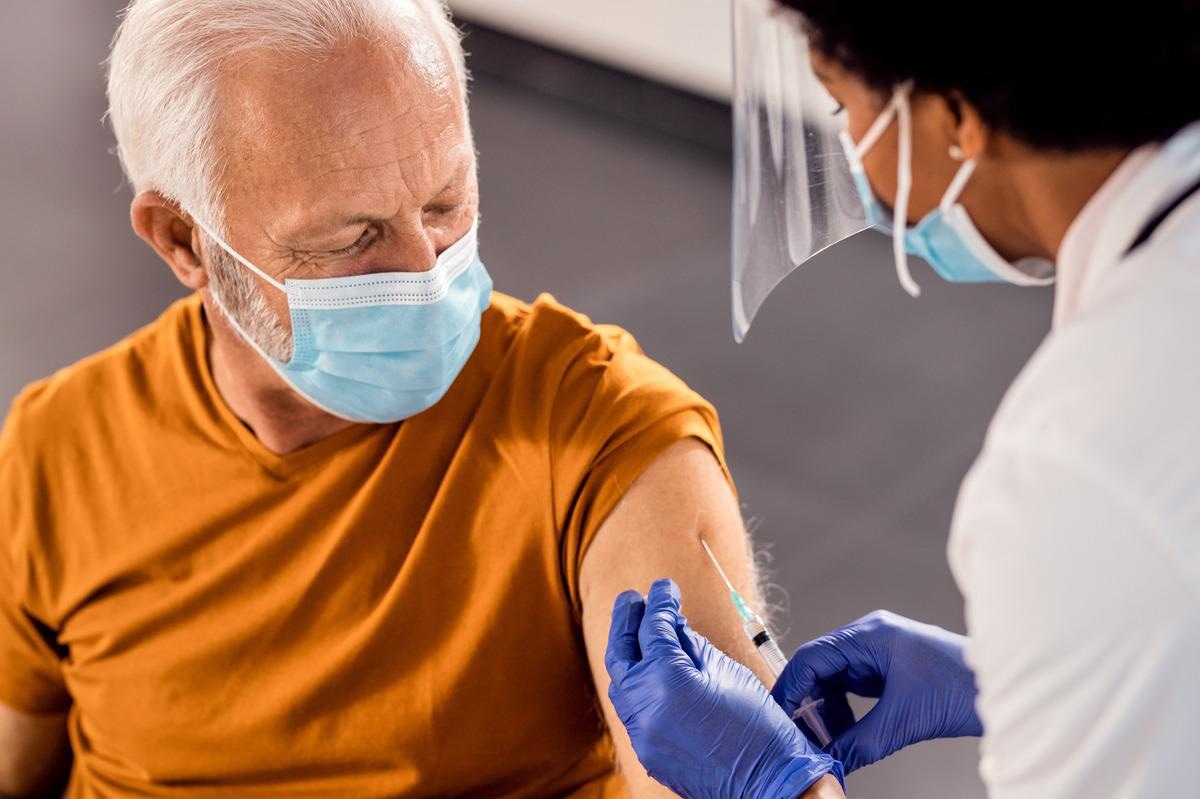Evaluating comparative effectiveness of Pfizer-BioNtech and Moderna vaccines among US veterans
The coronavirus disease 2019 (COVID-19) disease has been caused by the rapid outbreak of the severe acute respiratory syndrome coronavirus 2 (SARS-CoV-2) and has already claimed more than 5.23 million lives. Scientists have worked extremely hard to develop vaccines, many of which have received emergency use authorization from global regulatory bodies. Two mRNA-based vaccines (BNT162b2 and mRNA-1273) showed high efficacy (95% and 94%, respectively) in preventing symptomatic COVID-2019 disease, in early randomized trials. However, their comparative effectiveness for a range of outcomes across diverse populations is unknown.

Study: Comparative Effectiveness of BNT162b2 and mRNA-1273 Vaccines in U.S. Veterans. Image Credit: Drazen Zigic/Shutterstock
In a new study, published in the New England Journal of Medicine, scientists aimed to address this gap in the literature by evaluating the effectiveness of the BNT162b2 or mRNA-1273 vaccines, with respect to different clinical outcomes, in a cohort of United States veterans.
A new study
The participants selected for this study had to meet certain eligibility criteria, such as veteran status, aged 18 or over, no previously documented SARS-CoV-2 infection, or COVID-19 vaccination. Further, a known residential address outside of a long-term care facility and information on smoking status and the body-mass index were required. Researchers accessed electronic health records of U.S. veterans who received a first dose of the BNT162b2 or mRNA-1273 vaccine between January 4th and May 14th 2021. This was a period marked by the predominance of the SARS-CoV-2 B.1.1.7 (Alpha) variant.
Scientists matched recipients of each vaccine in a 1:1 ratio according to their risk factors. Each vaccine group included 219,842 persons. There was a wide range of clinical outcomes considered, such as documented SARS-CoV-2 infection, symptomatic disease, hospitalization for Covid-19, admission to an intensive care unit, and death. The Kaplan–Meier estimator was used to estimate the risks. To assess the influence of the B.1.617.2 (Delta) variant, a second target trial that involved veterans vaccinated between July 1st and September 20th 2021, was emulated.
Key findings
In a period marked by alpha-variant predominance, over 24 weeks of follow-up, recipients of the BNT162b2 vaccine had a 27% higher risk of documented SARS-CoV-2 infection and a 70% higher risk of hospitalization, compared to the recipients of the mRNA-1273 vaccine. Scientists also noted a greater risk of documented infection among recipients of the BNT162b2 vaccine, compared to those who received the mRNA-1273 vaccine, over 12 weeks of follow-up. This was also a period marked by delta-variant predominance. It must be noted that the latter estimate was less precise owing to the smaller number of eligible individuals.
Related recent research documented a lower risk of COVID-19 outcomes among recipients of mRNA1273 than among recipients of BNT162b2. However, this study included few events for severe COVID-19 outcomes and so the results should be interpreted with caution. The two mRNA vaccines have different mRNA content (100 μg for mRNA-1273 vs. 30 μg for BNT162b2) and the different interval between the priming and boosting doses (four weeks for mRNA1273 vs. three weeks for BNT162b2). This could explain the difference in effectiveness between the BNT162b2 and mRNA-1273 vaccines.
Strengths and limitations
The health care databases used are very rich and capture extensive data on demographic factors, medical records, laboratory tests, etc., for millions of persons nationwide. This richness allowed researchers to characterize recipients of each vaccine type with high resolution and to closely match them according to key confounders. Scientists were able to provide evidence for a diverse cohort of individuals that consisted of 21% Black and 8% Hispanic veterans. Subgroups of the population (e.g., black persons and individuals aged more than 70 years) that were relatively more affected by COVID-19, could also be studied. Further, the large sample size aided the evaluation of the comparative effectiveness of the two vaccines with respect to less common COVID-19 outcomes.
The study also has some limitations. Firstly, the assignment to a particular vaccine was not random, which means that the effects could be confounded. To address this issue, however, scientists rigorously matched recipients of each vaccine type, concerning certain factors. Researchers also pointed to the fact that outcome misclassification could not be ruled out if veterans obtained care outside the veteran affairs (VA) health care system. The eligibility criteria favored the selection of VA users with a known residential address to improve outcome ascertainment. Even if residual misclassification were present, the authors, this would be expected to be non-differential between the vaccination groups under comparison.
Conclusion
This study provided evidence of a lower 24-week risk of COVID-19–related outcomes among recipients of the mRNA-1273 vaccine, compared to their counterparts who received the BNT162b2 vaccine. The results were robust during the Alpha and Delta variant episodes. Further evaluation of the comparative effectiveness and safety of these vaccines is needed and this is something future research should consider.
- Dickerman, A.B. et al. (2021). Comparative Effectiveness of BNT162b2 and mRNA-1273 Vaccines in U.S. Veterans. The New England Journal of Medicine. doi: 10.1056/NEJMoa2115463 https://www.nejm.org/doi/full/10.1056/NEJMoa2115463
Posted in: Medical Science News | Medical Research News | Disease/Infection News | Healthcare News
Tags: Coronavirus, Coronavirus Disease COVID-19, Efficacy, Health Care, Intensive Care, Laboratory, Medicine, Research, Respiratory, SARS, SARS-CoV-2, Severe Acute Respiratory, Severe Acute Respiratory Syndrome, Smoking, Syndrome, Vaccine

Written by
Dr. Priyom Bose
Priyom holds a Ph.D. in Plant Biology and Biotechnology from the University of Madras, India. She is an active researcher and an experienced science writer. Priyom has also co-authored several original research articles that have been published in reputed peer-reviewed journals. She is also an avid reader and an amateur photographer.
Source: Read Full Article


